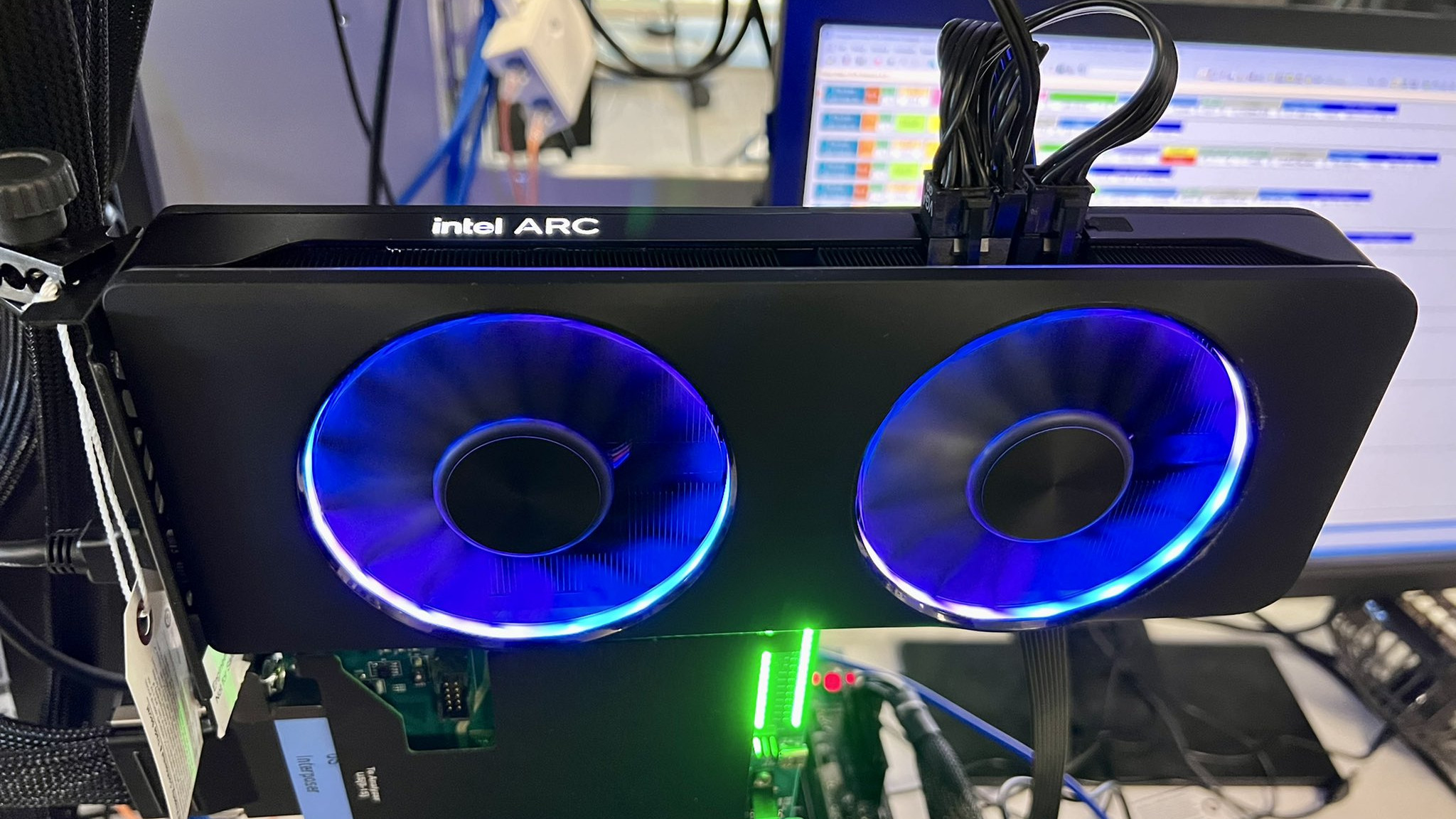Intel Arc A770 GPU leak could worry some gamers – but it shouldn’t
Benchmarks have been spilled for the flagship A770 and the A750 graphics cards

Intel’s top-end Arc graphics cards, the A7 series, have been spotted in some leaked benchmarks with interesting results – that we admittedly need to sprinkle liberally with the usual caveats.
So, treat this as the rumor it is, but VideoCardz reports that Geekbench results have popped up for the Intel Arc A770 and A750 GPUs (the Limited Edition versions, meaning the ones made by Intel itself, much like Nvidia and its Founders Edition cards).
Both graphics cards were tested with Vulkan and OpenCL in a PC with an Intel Core i9-12900KS processor (the fastest Alder Lake chip). In the Vulkan test, the A770 managed to rack up 73,536 points, with the A750 hitting 66,609, not too far behind.
With OpenCL, the A770 achieved 99,482 compared to 88,828 for the A750, so again, it was a similar story (albeit with the lesser spec A7 graphics card being a little further behind).
Analysis: Putting things into perspective
This is an interesting leak because these are the first external results for A7 GPUs outside of the boasts we’ve heard from Intel. If you recall, Team Blue promised that the Arc A770 is a rival for Nvidia’s RTX 3060 Ti, and the A750 is aimed at tackling the RTX 3060, based on Intel’s own performance comparisons. Which obviously as with any internal benchmarking, need to be taken with some seasoning in the light that the most favorable metrics are always picked for obvious marketing reasons (everyone does this, of course).
Now, in these benchmarks we see that the A770 is about even with the RTX 3060, not the 3060 Ti – and the A750 is a some way behind the RTX 3060 (by around 10% of thereabouts).
But before we get carried away with the notion that these Intel GPUs might be a bit more weak sauce than the company promised, we have to remember this is just one benchmark, and only the vaguest hint as to how these A7 graphics card might do in terms of real-world gaming performance (only the Vulkan score is relevant in this respect too, remember).
Get daily insight, inspiration and deals in your inbox
Sign up for breaking news, reviews, opinion, top tech deals, and more.
Of course, Geekbench scores are not the best way to judge gaming by any means, either, even in the world of synthetic benchmarks, and a case in point with the results shared here are the wonky scores for the AMD RX 6700 XT (which is certainly a good deal faster for gaming than the RTX 3060, but not in these results).
At any rate, what we can glean here is limited, and we need to wait for thorough testing and reviews of the Arc A770 and A750 to know how they’ll really shape up. The good news is what we do already know is that Intel is targeting pricing very aggressively, which is something we hoped for from early on with Arc GPUs, and that should shake up the market for more affordable graphics cards.
Nvidia’s RTX 4060 isn’t coming all that soon, so Team Green is going to leave buyers relying on the RTX 3060 and 3060 Ti for the time being, so they’ll hopefully need to be priced more competitively as Intel enters the market.
Assuming – and given the way the Arc launch has gone thus far, we probably shouldn’t assume too much – that the launch goes on time and smoothly with a good amount of stock of Intel’s own A7 GPUs. Hopefully, Limited Edition is just a name chosen by Intel – as mentioned, like Founders Edition – and not an actual indication that volume will be limited, meaning that we won’t see that many GPUs on shelves.
Darren is a freelancer writing news and features for TechRadar (and occasionally T3) across a broad range of computing topics including CPUs, GPUs, various other hardware, VPNs, antivirus and more. He has written about tech for the best part of three decades, and writes books in his spare time (his debut novel - 'I Know What You Did Last Supper' - was published by Hachette UK in 2013).